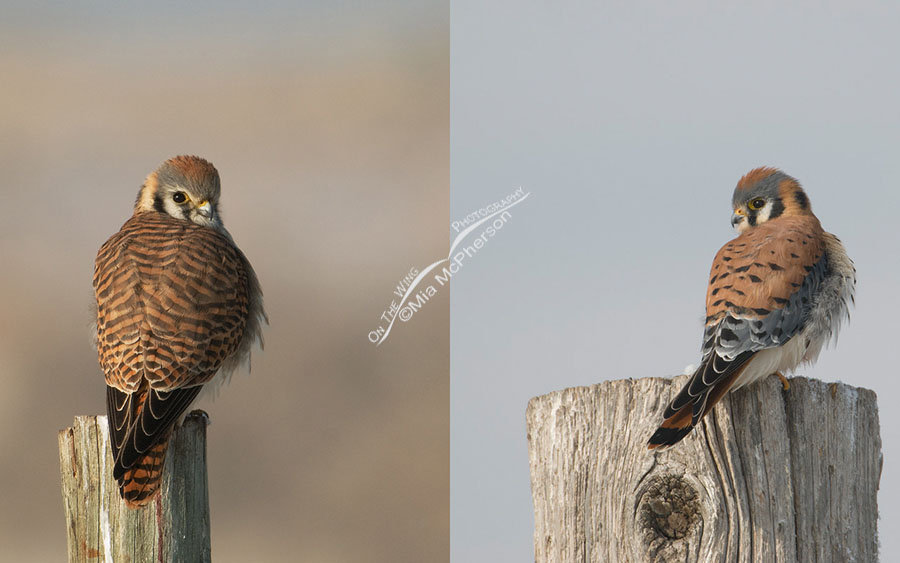
Female and Male American Kestrel Comparison
I’m keeping my post very simple this morning because I am rushing, part of the reason I am rushing is that I have been setting up a new phone and that took up a lot of my time yesterday so I didn’t have time to edit any recent photos.
I was going to post the image of this female American Kestrel because I have always loved it and it looks super printed on metallic paper and then I saw the image of the male and joined them together as a composite because they work well to show the differences between the sexes of our smallest North American falcon.
Females have barred rufous upperparts including their backs, wing coverts, rumps and their tails that are rufous with several black bars. They have light colored chests with rufous streaking, the patterns on their heads are similar to the heads of males but more subdued in coloration.
Males have gray-blue wings, rufous tails with one black terminal band, rufous backs, napes and rumps with black bars or spots and their chests are variable and can be from white to reddish buff with a few to many black spots instead of the streaking seen on females.
Both sexes are very colorful though the females lack the gray-blues of the males.
A few American Kestrel facts:
- American Kestrels hunt mainly for insects and small mammals but will take a small bird when they have the chance. American Kestrels usually capture their prey on the ground but they will also catch prey on the wing.
- Their habitat includes, open meadows, grasslands, deserts, road sides, towns, cities and farmlands.
- American Kestrels are cavity nesters. They lay between 3 to 7 eggs which take 26 to 32 days to hatch. The female is the primary incubator but males will also incubate on occasion.
- A common nickname for American Kestrels is “Sparrow Hawk”.
I’ve seen people struggle with seeing the differences between male and female American Kestrels and I hope this simple comparison will help. A part of the reason I started taking digital photos was because long ago I hoped to get a photos of an American Kestrel I could use as a reference to paint on canvas but I gave up painting for photography quite some time ago and now I photograph them just for the joy of it.
Life is good.
Mia
Click here to see more of my American Kestrel photos plus facts and information about this species.
Both of these images were taken at Farmington Bay WMA.





Love those kestrels! I saw one actually chase a Merlin off its customary perch.In New Mexico a brood of kestrels were raised in a neighbor’s bird box. They foraged on the ground like chickens, picking up crickets and grasshoppers.
Thank you.
Wonderful images plus great information – thanks!
Such beauty! I like the way your post has related photo subjects below the current days posts. I must have missed (or forgotten, highly possible) the pale chested kestrel. What a beautiful bird!
Beautiful images—and very interesting information on how these besutiful, cute little assassins differ….thanks. Hope your phone serves you well….
Beautiful! I love seeing American Kestrels.
Beautiful shots. I notice they are both suspicious of you. And I bet you were FAR away too.